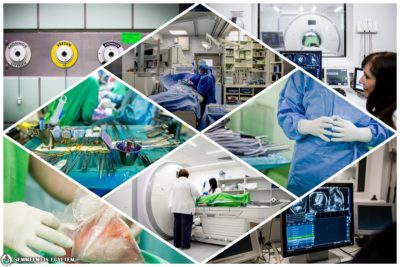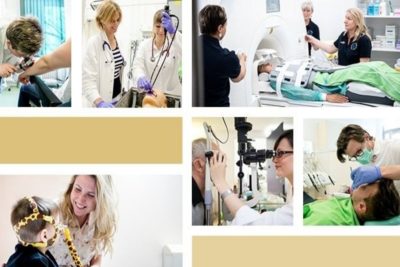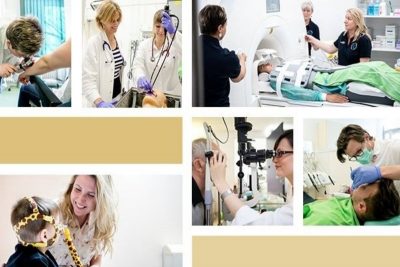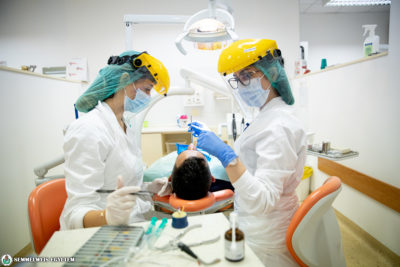 Due to the international epidemiological situation, the plenary session of the conference focused on the challenges of COVID-19 in education, science, public health and patient care. As part of this session, Dr. Béla Merkely, Rector gave a presentation on Semmelweis University’s role in the fight against the coronavirus. In his lecture, he introduced the university as the largest centre catering for COVID-19 patients in Hungary and pointed out its role as a warden of epidemic control along with the other medical universities. He gave an overview of the details and results of H-UNCOVER, the representative national screening programme carried out in May, the differences between the first and second waves in Hungary and the statistical data of the neighbouring countries.
Due to the international epidemiological situation, the plenary session of the conference focused on the challenges of COVID-19 in education, science, public health and patient care. As part of this session, Dr. Béla Merkely, Rector gave a presentation on Semmelweis University’s role in the fight against the coronavirus. In his lecture, he introduced the university as the largest centre catering for COVID-19 patients in Hungary and pointed out its role as a warden of epidemic control along with the other medical universities. He gave an overview of the details and results of H-UNCOVER, the representative national screening programme carried out in May, the differences between the first and second waves in Hungary and the statistical data of the neighbouring countries.
“The university is planning two additional screening programmes by May 2021, one before the national vaccination programme, to get a clear picture of the extent of the second wave.”, the Rector said.
He spoke about the challenges posed by the epidemic in education mentioning how quickly and successfully the university managed to adapt to the new circumstances and maintained as many forms of practical training as possible, while switching to hybrid education.
“The university has launched several research and development programmes related to the coronavirus, free PCR screening is available for Semmelweis citizens and the students have contributed to disease control by doing voluntary work at screenings and donating plasma.”, said Dr. Béla Merkely as a conclusion of his lecture.
Dr. Fidencio Saldana, Dean of Students at Harvard Medical School spoke about the experiences at Harvard University during the epidemic. They immediately switched mainly to online education and the modified study programme was designed to make students spend as little time in front of screens as possible and be engaged in more interactive courses. In case of clinical practices, they had the opportunity to practice skills, such as taking medical history via telephone or online. Student were given several opportunities for feedback and exams focused on the main competences. According to Dr. Fidencia Saldana, several elements of online education will be kept even after the epidemic, such as more frequent online contacts and community events.ssss
The public health aspects of COVID-19 were presented by Dr. Zoltán Vokó, Director of Semmelweis University’s Centre for Health Technology Assessment. He talked about the different levels of preparedness of various countries at the onset of the epidemic, the mistakes made in communication and inadequate risk assessment and the issue of trust and accountability. He urged the development and modernization of public health institution and their preparation for the next epidemic as their readiness is crucial in handling emergency situations.
“Healthcare professionals need to learn and make better use of modern media and communication technologies and health care needs to be given higher priority in the political agenda.”, Dr. Zoltán Vokó said.
In his presentation Phil Baty, chief knowledge officer of Times Higher Education spoke about the impact the epidemic may have on rankings. After a short introduction of the building blocks and methodology of rankings, he mentioned the trends of the recent years. He pointed out a slow west to east shift, which is demonstrated by the strengthening of universities from the Asia-Pacific region (China, South-Korea, Australia) and the decreasing weight of traditional western universities (USA, Europe) in rankings. According to Phil Baty this trend will reinforced by the epidemic, as students in Asia will be more likely to choose local universities instead of travelling to distant countries.
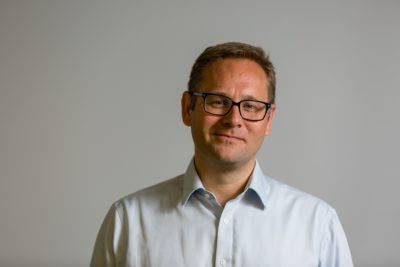 Phil Baty, chief knowledge officer, Times Higher Education (THE)
Phil Baty, chief knowledge officer, Times Higher Education (THE)
What is your personal or professional relationship with Semmelweis University?
Although, I do not have direct personal relation with the university, I, as editor-in-chief of Times Higher Education, closely follow the trends in Hungarian higher education. I am pleased to see that Semmelweis University has been Hungary’s leading university for a while now and it has kept its position in international rankings despite the strong competition set by Eastern-Asian countries, especially China.
Your presentation was about the evolvement of rankings. Why did you choose this topic and what is your main message?
I have been the editor of the prestigious THE World University Rankings for 10 years, I wanted to give a true insight into the data of the ranking to help universities and scientists better understand the changing circumstances of global higher education and research. I believe it is crucial that ranking organizations are accountable to university citizens, to provide them with transparent methodology to work with and to enable them to adapt to the changing world that has been even more accelerated by the current epidemiological situation.
What are the difficulties in ranking the universities of the world?
We surveyed over 2,000 universities for this year’s ranking and 1,500 universities, a record number, ended up in the list as well. This is an extraordinary achievement during the pandemic but it is also an indicator of a huge demand for global, comparable and data-based knowledge in the world of higher education. We have been continuously developing our criteria and methodology with the help of our university partners and according to their needs. I am sure that research and innovation will have an increased role in future rankings. Our new development is THE Impact Rankings, which compares universities based on their social and economic impact based on the Sustainable Development Goals of the United Nations. This gives a new, more comprehensive and multifaceted view of the universities’ excellence. I am pleased to note that Semmelweis University has scored well in this ranking.
The COVID-19/Infectology session was followed by Cardiovascular Medicine beginning with the presentations of Dr. Annamária Kosztin and Dr. Balázs Sax (Heart and Vascular Centre). They gave an overview of the currently available device therapy for chronic heart failure, the latest trends in heart transplantation, and the development and importance of circulatory support devices. The detailed presentation of the currently available forms of treatment served as an introduction to the visionary lecture of Dr. Thomas Luscher (University of Zurich, Imperial College London) on the future of cardiology. Professor Lüscher emphasized the importance of personalized prevention in addition to personalized treatment in the future, and to solve problems in their depth instead of only treating the symptoms. There are more and more new tools to do so, such as stem cell therapy, the Nobel-prize winning CRISPR-Cas9-method or the involvement of machine learning in clinical and basic research. Dr. Christoph Maria Bode, professor of cardiology at the University of Freiburg, who has an excellent relationship with Semmelweis University arrived at the same conclusions after taking a look at the past, present and future of cardiovascular intervention: involving robotics and artificial intelligence are inevitable in increasing precision.
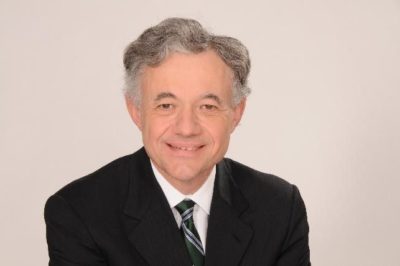
Dr. Christoph Maria Bode, director of the Department of Cardiology and Angiology, University of Freiburg
What is your personal or professional relationship with Semmelweis University?
I have known Dr. Béla Merkely, Rector for thirty years, we studied together in Heidelberg as fellows. Later, we participated in the steering committees of several large clinical trials and worked together on EU projects; it is always a pleasure for me to work together. Moreover, recently I have been to Budapest more frequently where my daughter is studying veterinary medicine.
Cardiology in Hungary is at the forefront of the development of the field, the Hungarian heart centres play an important role in several international studies. Hungarian cardiology is very lucky to have Dr. Béla Merkely as their excellent representative, who has increased the international visibility of Hungarian cardiology in addition to its development.
Your presentation was about the past, present and future of cardiology. Why did you choose this topic?
In the past 40 years of cardiology has evolved from a primarily diagnostic field into a mixed, diagnostic-therapeutic field. Coronary catheterization and interventions using other devices or related to arrhythmia and structural heart diseases have greatly transformed cardiology and its relation to heart surgery. Currently, there are endless opportunities: the development of interventional cardiology is limited only by human creativity. Together with Dr. Béla Merkely we have taken active part in these processes. The main message of my lecture si that interventional cardiology is a highly dynamic discipline of cardiology, whichis an excellent area of specialization for young cardiologists. This field will have a major impact on the lifespan and quality of life of the present and future generations.
What are the most promising developments in the field of interventional cardiology?
I see great progress in the field of coronary heart diseases and there are a lot of pioneering technical developments in the treatment of structural heart diseases, however, further improvement is needed in the latter. In Freiburg, we focus on interventional robotics; if this can be improved combined with telemedicine, it would allow further cooperation with Semmelweis University. For example, together, we would be able to treat a patient at the same time, while the patient is in a third location.
The four, high quality poster sessions, which showcased the research results of nearly 60 PhD students and specialists, were followed by nearly 400 participants. Just like in the sessions of the presentations, the posters covered many disciplines of medicine from psychiatry through neurology, haematology, imaging, pulmonology, paediatrics and dermatology to forensic medicine and public health.
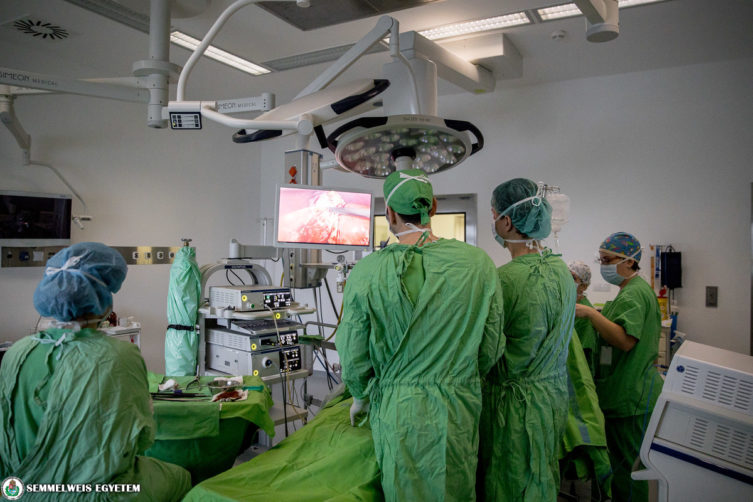 In the Abdominal Surgery and Orthopaedics Session, Dr. Béla Teleky, expert of the field from Vienna spoke about the extensive opportunities in the surgical treatment of colorectal cancer. The lecture of Dr. Gábor István (2nd Department of Surgery), closely related to the previous topic, was about the minimally invasive therapy of colon cancers. The advantages of minimally invasive and laparoscopic techniques were one of the central messages of the session. Dr. Attila Szijártó (1st Department of Surgical and Interventional Gastroenterology) introduced the state-of-the-art technologies by the detailed presentation of Prometheus. Before moving on to orthopaedics, the joint use of conservative and surgical treatments of the diseases of the pancreas was in focus. Dr. Tamás Terebessy and Dr. Gábor Skaliczki (Department of Orthopaedics) presented the two sides of clinical research: the new diagnostic possibilities for arthritis worked out from the direction of basic research; and the state-of-the-art directions of clinical research in the treatment of neuromuscular diseases including the issues constantly emerging parallel to development.
In the Abdominal Surgery and Orthopaedics Session, Dr. Béla Teleky, expert of the field from Vienna spoke about the extensive opportunities in the surgical treatment of colorectal cancer. The lecture of Dr. Gábor István (2nd Department of Surgery), closely related to the previous topic, was about the minimally invasive therapy of colon cancers. The advantages of minimally invasive and laparoscopic techniques were one of the central messages of the session. Dr. Attila Szijártó (1st Department of Surgical and Interventional Gastroenterology) introduced the state-of-the-art technologies by the detailed presentation of Prometheus. Before moving on to orthopaedics, the joint use of conservative and surgical treatments of the diseases of the pancreas was in focus. Dr. Tamás Terebessy and Dr. Gábor Skaliczki (Department of Orthopaedics) presented the two sides of clinical research: the new diagnostic possibilities for arthritis worked out from the direction of basic research; and the state-of-the-art directions of clinical research in the treatment of neuromuscular diseases including the issues constantly emerging parallel to development.
The session on Neurology, genomic medicine, psychiatry and behavioural sciences included one international and 5 university speakers. In his introduction, Dr. János Réthelyi session chair (Department of Psychiatry and Psychotherapy) pointed out that the different divisions of clinical neurosciences branched off 70 years ago, which was necessary back then, but now there are several new points of connection between the different fields. Brain imaging, electrophysiology and genetics may turn into methods in the future that could create new diagnostic systems in the fields of psychiatry and neurology. In his presentation “Shaping the future of Psychiatry”, Dr. Péter Falkai, head of the Department of Psychiatry and Psychotherapy at Ludwig-Maximillian University in Munich gave an overview of the trends and methods that will gain great importance in psychiatry in the following decades. He highlighted the importance of brain imaging, transcranial magnetic stimulation and translational research. Dr. Bea Pászthy (1st Department of Paediatrics, division of child- and adolescent psychiatry) talked about the mental needs of children, the latest trends in child psychiatry and the psychological effects of COVID-19 on children. Dr. Mária Judit Molnár (Institute of Genomics and Rare Diseases) presented the development of genomic medicine with examples from the fields of neurology and psychiatry. In the thematic lecture of Dr. Dániel Bereczki (Department of Neurology) outlined the evidence-based treatment and historical development of ischaemic stroke. Dr. Zsuzsanna Arányi (Department of Neurology) spoke about the new, ultrasound-based examinations of the peripheral nervous system, focusing on the diagnostics of thoracic outlet syndrome. The session’s closing lecture was held by Dr. György Purebl (Institute of Behavioural Sciences) on the significance of chronobiology and the perspectives of ecomedicine.
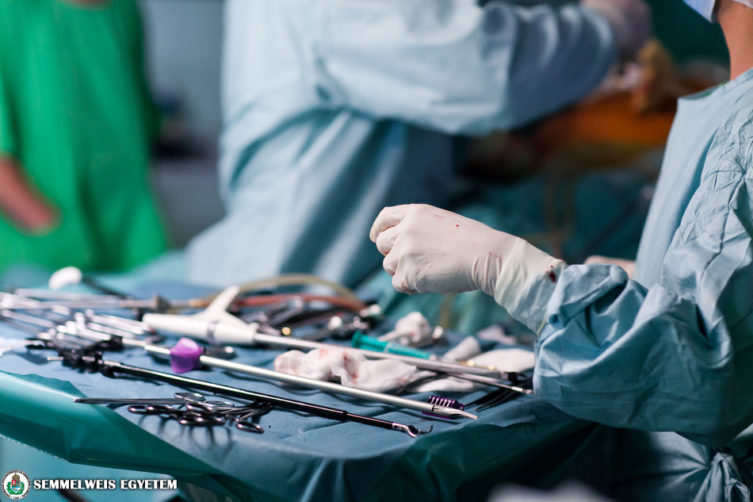 The first day was closed by the Paediatric Session with internationally renowned speakers. Under the chairmanship of Dr. Attila Szabó and Dr. Tivadar Tulassay (1st Department of Paediatrics) two international experts were included in the speaker panel: Dr. Claus P. Schmitt, director of the International Paediatric Peritoneal Biobank from Heidelberg and Dr. Jens Titze, professor of the Duke-NUS Singapore and University of Erlagen, who is the expert of ion/liquid homeostasis. In their lectures they emphasized the biocompatibility hypothesis of peritoneal dialysis in paediatric nephrology, the importance of the composition of dialysis liquids and their potential side effects, the comparison of peripheral vasculopathy and peritoneal lesions as well as salt deposition and the effects of salt intake tested in astronauts. Dr. Balázs Győrffy (2nd Department of Paediatrucs) gave a detailed presentation on the new therapeutic options in the field of paediatric oncology. Through excellent clinical case studies, Dr. István Seri and Dr. Miklós Szabó (1st Department of Paediatrics) demonstrated the challenges of cardiorespiratory monitoring and mathematical modelling, as well as the treatment strategies of neonates with asphyxia by hypothermia and hypocapania management and corticosteroid treatment mentioning future innovation. The presentations were followed by a lively discussion covering all topics in the session.
The first day was closed by the Paediatric Session with internationally renowned speakers. Under the chairmanship of Dr. Attila Szabó and Dr. Tivadar Tulassay (1st Department of Paediatrics) two international experts were included in the speaker panel: Dr. Claus P. Schmitt, director of the International Paediatric Peritoneal Biobank from Heidelberg and Dr. Jens Titze, professor of the Duke-NUS Singapore and University of Erlagen, who is the expert of ion/liquid homeostasis. In their lectures they emphasized the biocompatibility hypothesis of peritoneal dialysis in paediatric nephrology, the importance of the composition of dialysis liquids and their potential side effects, the comparison of peripheral vasculopathy and peritoneal lesions as well as salt deposition and the effects of salt intake tested in astronauts. Dr. Balázs Győrffy (2nd Department of Paediatrucs) gave a detailed presentation on the new therapeutic options in the field of paediatric oncology. Through excellent clinical case studies, Dr. István Seri and Dr. Miklós Szabó (1st Department of Paediatrics) demonstrated the challenges of cardiorespiratory monitoring and mathematical modelling, as well as the treatment strategies of neonates with asphyxia by hypothermia and hypocapania management and corticosteroid treatment mentioning future innovation. The presentations were followed by a lively discussion covering all topics in the session.
Tamás Deme, Dr. Eszter Lévai, Dr. Vivien Somogyi
Interviews: Tamás Deme
Featured image and illustrations: Attila Kovács – Semmelweis University
Translation: Ágnes Raubinek
